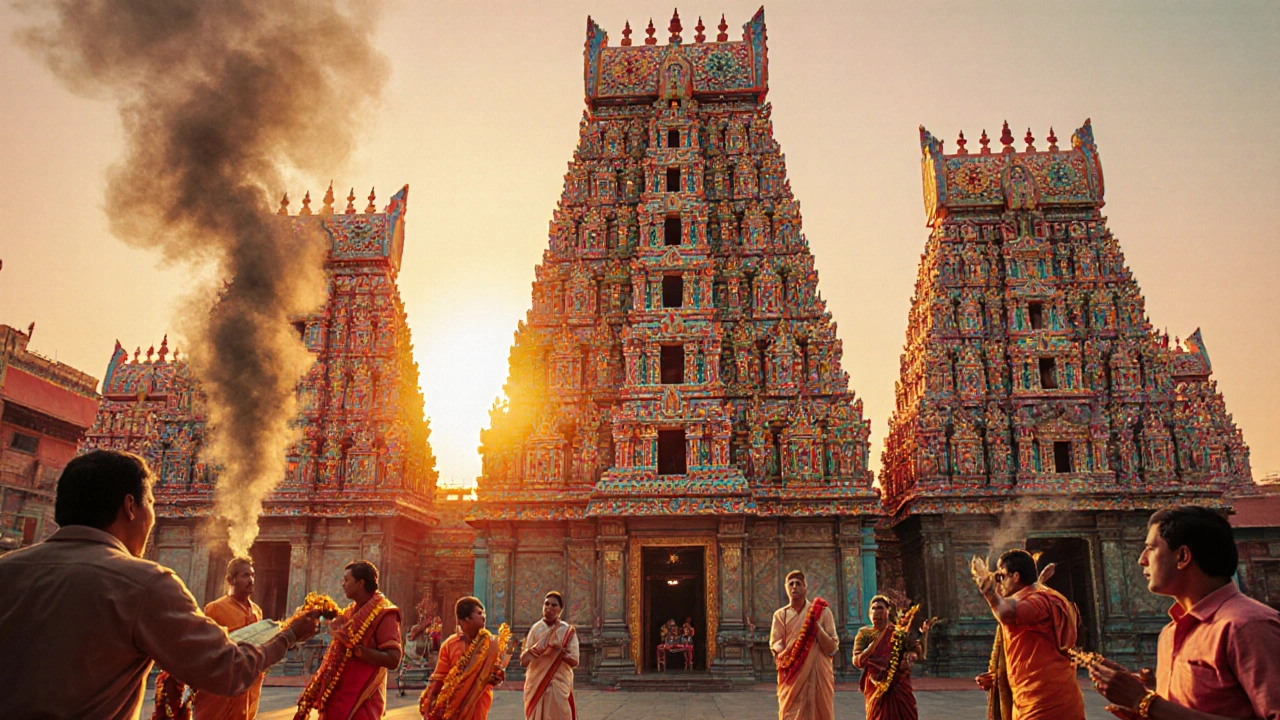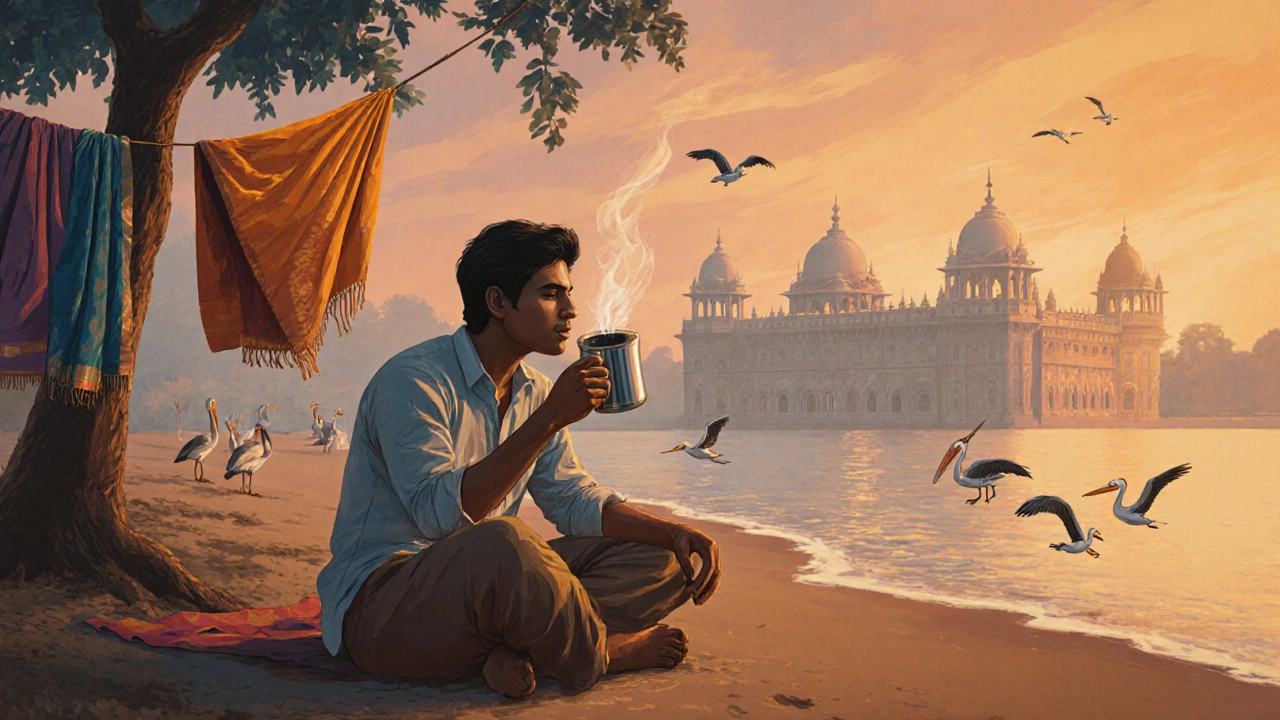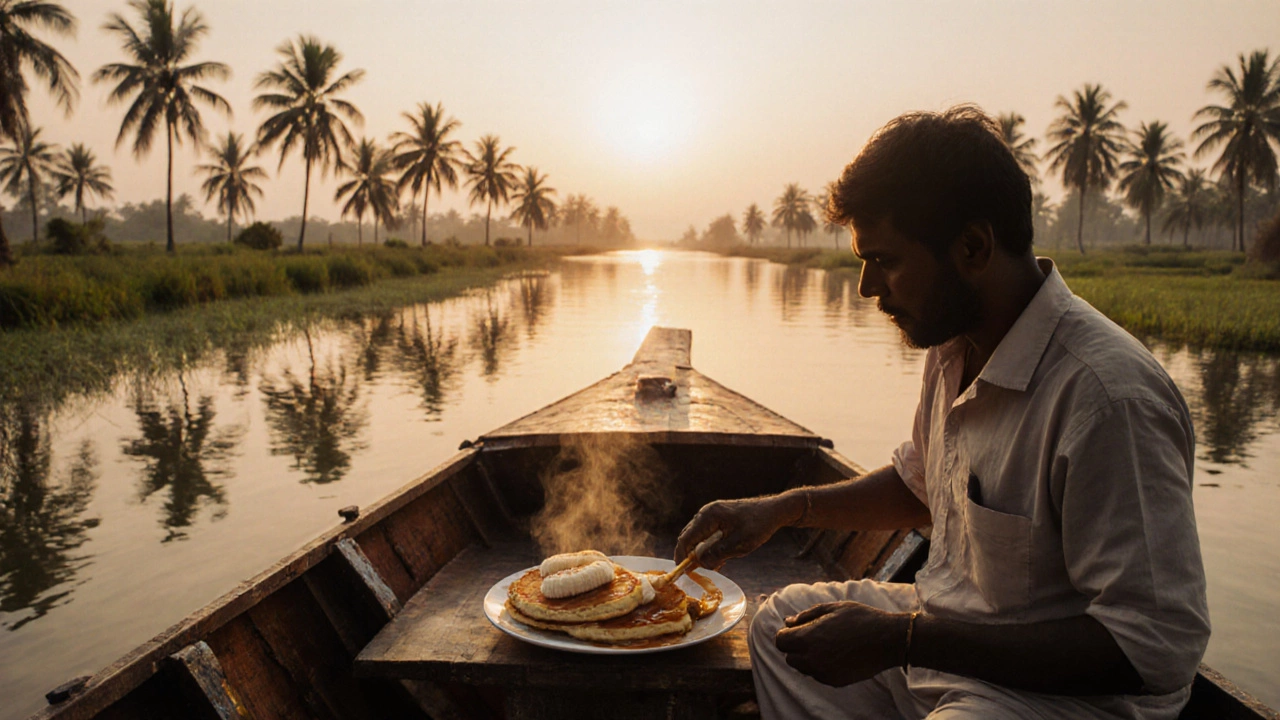South India Budget Calculator
Plan Your South India Adventure
Based on the article's recommendations for first-time visitors to South India.
Your Estimated Budget
This includes flights, accommodation, daily expenses, and a private houseboat (if selected).
India can feel overwhelming on your first visit. The noise, the crowds, the smells, the colors-it’s a lot. But if you’re planning your first trip to India, skipping the chaos of Delhi or the over-touristed Taj Mahal isn’t just smart-it’s essential. The real magic for newcomers lies in the south. Quiet temples, backwater boat rides, misty hills, and beaches where you can actually hear the waves. This isn’t just a trip. It’s your gentle introduction to a country that’s ancient, alive, and deeply welcoming.
Why South India for Your First Visit?
North India screams at you. South India whispers. That’s the difference. In Kerala, you drift through coconut-lined canals in a houseboat. In Tamil Nadu, you walk through 1,000-year-old temple complexes where the air smells like incense and jasmine. In Karnataka, you find forgotten stone cities carved into hills. No one’s pushing souvenirs. No one’s shouting for tuk-tuks. The pace is slower. The people are calmer. And for first-timers, that matters more than you think.
Food is another reason. South Indian meals don’t come with 12 spicy curries that make your stomach rebel. Think steamed idlis with coconut chutney, dosas crispy at the edges, and sambar that’s tangy but not burning. It’s flavorful without being punishing. And the water? Cleaner. The roads? Less chaotic. The tourist infrastructure? More reliable. You won’t need to be a survivalist to enjoy it.
The Perfect 10-Day Route
Here’s what works: a loop. Start in Kochi, end in Mysore. It’s not the shortest path, but it’s the most balanced. You get culture, nature, food, and rest-all in one go.
- Kochi (3 days) - Your entry point. Fly into Cochin International Airport. Stay in Fort Kochi, where Portuguese and Dutch buildings line the waterfront. Walk the Chinese fishing nets at sunset. Take a walking tour of the Jewish Synagogue and the Mattancherry Palace. Book a Kathakali dance show-it’s dramatic, colorful, and lasts just 90 minutes. Eat seafood at a local shack: prawn curry, rice, and a cold Kingfisher beer.
- Alleppey (2 days) - Take a 3-hour drive or train to Alleppey, the heart of Kerala’s backwaters. Book a private houseboat with a cook. No shared boats. You’ll glide past paddy fields, coconut groves, and villages where kids wave from the banks. Sleep on the boat. Wake up to the sound of water lapping. Have breakfast on deck: banana pancakes with coconut syrup.
- Madurai (2 days) - Fly or take a 6-hour drive to Madurai. This city lives for its temple. The Meenakshi Amman Temple isn’t just a place of worship-it’s a city within a city. 14 towers, 33,000 sculptures, gold-plated ceilings. Visit at dawn when the priests chant and the air fills with flower offerings. Walk the streets afterward. Try the jalebi with cardamom milk at Sree Krishna Sweets. Don’t miss the street-side filter coffee-it’s thick, sweet, and served in a steel tumbler.
- Mysore (3 days) - Take a 5-hour train to Mysore. This is where royalty still walks the streets. The Mysore Palace glows gold at night, lit up like a fairy tale. Tour the palace, then visit the Chamundi Hill temple for panoramic views. Shop for silk saris at the government emporium-they’re cheaper than in Delhi and just as beautiful. Eat mysore pak, a sweet made from gram flour and ghee. It melts in your mouth. End your trip with a quiet evening at the Kukkarahalli Lake, watching pelicans dive for fish.
What to Pack (Seriously, This Matters)
You don’t need much. But what you bring makes the difference.
- Light cotton clothes-long sleeves and pants for temples
- A small scarf or shawl for women to cover shoulders in temples
- Comfortable walking shoes-no sandals, they won’t last
- Reusable water bottle with filter (Tap water is not safe)
- Basic meds: anti-diarrheal, painkillers, antihistamines
- Power bank-outlets are scarce in backwater villages
- Small notebook and pen-locals love to practice English
Leave the fancy camera at home. A phone with a good camera is enough. You’ll take more photos anyway.

Food Tips That Keep You Safe
Don’t be scared of street food. But be smart.
- Only eat from stalls where locals line up
- Hot food = safe food. If it’s been sitting out, walk away
- Stick to bottled water. Even ice cubes can be risky
- Try the local breakfasts: idli, vada, pongal. They’re steamed, not fried
- Coconut water from green coconuts is safe and refreshing
- Don’t drink milk tea from roadside vendors-it’s often made with tap water
One thing you’ll notice: South Indians don’t eat with their hands just because it’s traditional. They do it because it’s better. The warmth of the rice, the texture of the curry-it all connects when your fingers are involved. Don’t be shy. Watch how locals do it. Use your right hand. Wipe your fingers on the napkin after. It’s not messy. It’s intimate.
What Not to Do
There are small things that can ruin your trip if you ignore them.
- Don’t haggle aggressively. Prices are already low. A 10% discount is fair. Pushing harder feels rude
- Don’t take photos of people without asking. Especially women and temple priests
- Don’t wear shorts or tank tops in temples. You’ll be turned away
- Don’t expect Wi-Fi everywhere. Backwater houseboats have spotty signal. Embrace it
- Don’t try to see everything. Pick three places and really live them

When to Go
October to March is ideal. The monsoon ends in September. By October, the air is cool, the skies are clear, and the humidity drops. December and January are peak months-book everything early. February and March are quieter, with the same weather. Avoid April to June. It’s hot. Really hot. Like 40°C hot.
Is This Trip Worth It?
Yes. Not because it’s Instagram-perfect. But because it’s real. You’ll sit on a houseboat with nothing but birdsong and the slow creak of wood. You’ll watch a priest light oil lamps in a 1,000-year-old temple, and you’ll feel time slow down. You’ll eat a meal that costs $2 and taste more flavor than any five-star restaurant you’ve ever been to.
This isn’t a vacation. It’s the start of something deeper. India doesn’t reveal itself in a week. But South India gives you the first real breath.
Is South India safe for first-time travelers?
Yes, South India is one of the safest regions in the country for first-time visitors. Crime rates are low, locals are generally helpful, and tourist areas are well-managed. Petty theft can happen anywhere, so keep valuables secure and avoid flashing cash. Women travelers should dress modestly in temples and avoid walking alone at night in unfamiliar areas, but overall, the region is very welcoming.
Do I need a visa to visit India?
Yes, most travelers need an e-Visa. Apply online at the official Indian government portal at least 4 days before your trip. The process takes under 10 minutes. Choose the Tourist e-Visa-it’s valid for 60 days and allows double entry. Make sure your passport has at least six months of validity left. No need for a physical stamp anymore; the visa is sent to your email.
How much should I budget for a 10-day trip to South India?
You can do it on $500-$800 per person if you’re budget-conscious. That includes mid-range hotels ($25-$50/night), local meals ($3-$8), internal transport (trains and taxis), and entry fees. A private houseboat in Alleppey will cost $70-$120 per night. Flights from major international hubs to Kochi range from $700-$1,200 round-trip. Skip luxury resorts on your first trip-save them for when you come back.
Can I use credit cards in South India?
Yes, but not everywhere. Big hotels, restaurants in cities, and tourist shops accept Visa and Mastercard. But small guesthouses, street vendors, temple donations, and local transport only take cash. Carry around $100-$150 in local rupees (₹8,000-₹12,000) in small bills. ATMs are common in towns, but avoid using them at night. Always have cash on hand for emergencies.
Should I hire a guide in the temples?
It’s optional but highly recommended, especially for places like Meenakshi Temple or Mysore Palace. A good guide doesn’t just tell you facts-they explain the stories behind the carvings, the rituals, the symbolism. A 2-hour guide costs about $10-$15. Avoid touts at the gate. Ask your hotel to arrange one. They’ll connect you with a certified, English-speaking guide who won’t pressure you into buying things.
Next Steps
Book your flights to Kochi between October and March. Pick a 10-day window. Don’t overpack your days. Leave space to sit by a canal, sip coffee, and just watch the world go by. This isn’t a checklist. It’s a feeling you’ll carry home.
When you come back, you won’t say, ‘I saw India.’ You’ll say, ‘I felt it.’ And that’s the point.
